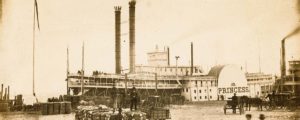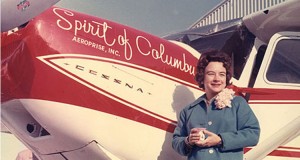Although games could be lucrative, they were rarely honest.
In the 1993 film Tombstone, Doc Holliday asks his pal Wyatt Earp, “Since when is faro a business?” Holliday follows up with the wry observation, “Only suckers buck the tiger; the odds are all on the house.” Catchy dialogue, but historically it would seem to miss the mark—a thing the real John Henry Holliday rarely did. Dentistry never got Doc much beyond a nickname, but for him and many contemporaries, faro, mainstay of saloons and gambling houses across the Wild West, was indeed a business—generally lucrative and often respectable, if rarely honest.
Of European origin, faro had been played in the United States since at least the early 19th century. As the country expanded westward, faro grew along with it, its manifest destiny to become the great mogul of Western gambling games. It was a deceptively simple game, requiring a dealer and a standard deck of 52 cards. Cards were held face up in an open-topped box that allowed them to be slid out one by one, were dealt in turns of two and were bet to win for the bank or the player, the player having the option to back either card.
Players bet using poker-style chips (“checks,” in gamblers’ parlance), or colored rectangular markers, on a green felt or oilcloth layout bearing images of the 13 cards, ace through king (suits were irrelevant). Hexagonal tokens called “coppers” (pennies were originally used) marked bets backing the bank’s card. Bettors could also win by guessing which card drawn would be odd or even numbered, or the higher denomination of the two. An abacus-like “casekeeper” or “cue box” (operated by a dealer’s assistant, also known as the casekeeper) aided players in tracking cards already played. Many houses provided “tabs” (paper sheets printed with the various card denominations) for this same purpose—hence the expression “keeping tabs.”
Besides the casekeeper, most faro banks employed a “lookout,” whose duties ranged from paying and collecting bets to resolving disputes. Many banks (particularly the questionable ones) also employed “cappers,” who posed as players and steered others to the game.
As a business venture, faro took many forms. At one end of the scale were “snaps”— small-stakes traveling or impromptu games set up in barrooms or on street corners by the tripe-and-keister crowd. At the other end were proprietary banks run by the opulent gambling dens in cities like Denver and San Francisco. Most banks lay between the two extremes—operating in saloons and gambling houses in towns across the country.
Many banks were financed by the house, with dealers on salary. Others were run by entrepreneurs who paid the house for hosting the game.
These early concessionaires supplied the capital, equipment and employees, often operating faro banks in several establishments, or even in different towns. Many dealers bankrolled games themselves, paying the house a percentage of their winnings. Depending upon its location, a faro bank could rake in anywhere from $500 to tens of thousands a month; one Kansas City bank in the late 1880s reported a 30- day take of nearly $64,000. With individual bets often limited to $25, this gives some idea of faro’s popularity—and its profitability.
Faro’s seeming ease of play and close odds, along with its colorful layouts and paraphernalia, made it a perennial favorite with players and spectators alike. Experts disagreed on whether odds fell slightly on the bank’s or player’s side, but all agreed that when played honestly, faro offered better chances of winning than any other game the sporting parlors ran. The house’s one obvious advantage was in “splits,” if both cards in a turn were the same denomination, half of any bet on that card went to the bank.
And there was the rub—a canny dealer could tilt odds sharply in the bank’s favor by manipulating the number of splits in a game. They occurred naturally only about three times in two games; the dealer could increase their appearance in several ways, from bogus shuffles, to marked decks, to specially designed/prepared cards and to “gaffed” dealing boxes designed to allow more than one card to be withdrawn at a pass. Most gaming equipment suppliers offered these crooked items in their catalogs, and there was a ready market.
Dealers were paid wages of $100-200 a week, often a percentage of profits as well, while the cowboys who played at their tables averaged $30 a month. One Hoyle editor of the period pointed out that it was “hardly necessary to say that [the dealer] is not paid that amount simply for pulling cards out of a box.” Games where dealers employed chicanery were called “brace” or “skin” games, while honest games were “square.” Any dealer worth his pay could deal either, and none but the most scrupulous (an apparent rarity) hesitated to employ the tricks of his trade. Odds were too close for consistent profit, and the temptation to better the odds was nigh irresistible.
Even lawmen, many of whom supplemented their scanty pay on one side or the other at gambling tables, might shuck their ethics where faro was concerned. Frank “Fatty” Ryan, a two-term police chief in Tombstone, Arizona Territory, ran a snap in which his bankroll was a $20 gold piece atop a metal slug designed to look like a stack of double eagles. Although the scheme ultimately folded on him, that Ryan could run it for any time at all suggests his play wasn’t srictly on the level.
More familiar figures than Ryan were associated with faro shenanigans. In June 1902, William Barclay “Bat” Masterson was arrested in New York City. Bat was accused of being part of a gang that had run brace games from Arkansas to New York, and had fleeced a Mormon elder of $17,000. The case was soon dismissed when the elder suffered either a change of heart or a lapse of memory. Doc Holliday’s old friend (and Bat’s) Wyatt Earp was likewise arrested in Los Angeles in July 1911. In Wyatt’s case, the charge was conspiracy to cheat a faro bank where he was employed as dealer, by using marked cards and a confederate posing as a player. A newspaper report mused, “It would seem that a faro bank ought to be about the last kind of an institution to squeal about a little thing like that.”
The old gambler’s luck held, and Wyatt’s case, like Bat’s, was dismissed. Whether either was guilty of the charges, the incidents said something about the company they kept, even years after their heyday as lawmen (Bat was nearly 50 when arrested; Wyatt was in his 60s).
Another gambler of the Earp-Masterson-Holliday circle, dapper little Luke Short was one dealer reputed to have always run a square game. Of course, it might simply have been that no one dared to question him. Disputes with Short tended to foster gunplay, and gunplay with Luke tended toward the graveyard.
Doc Holliday himself spent much time behind a dealing box. With the real Holliday’s knowledge of faro, its purveyors and their oft-crooked ways, his film counterpart’s claim that odds were “all on the house” may have been on the money after all.
Originally published in the August 2008 issue of Wild West. To subscribe, click here.




